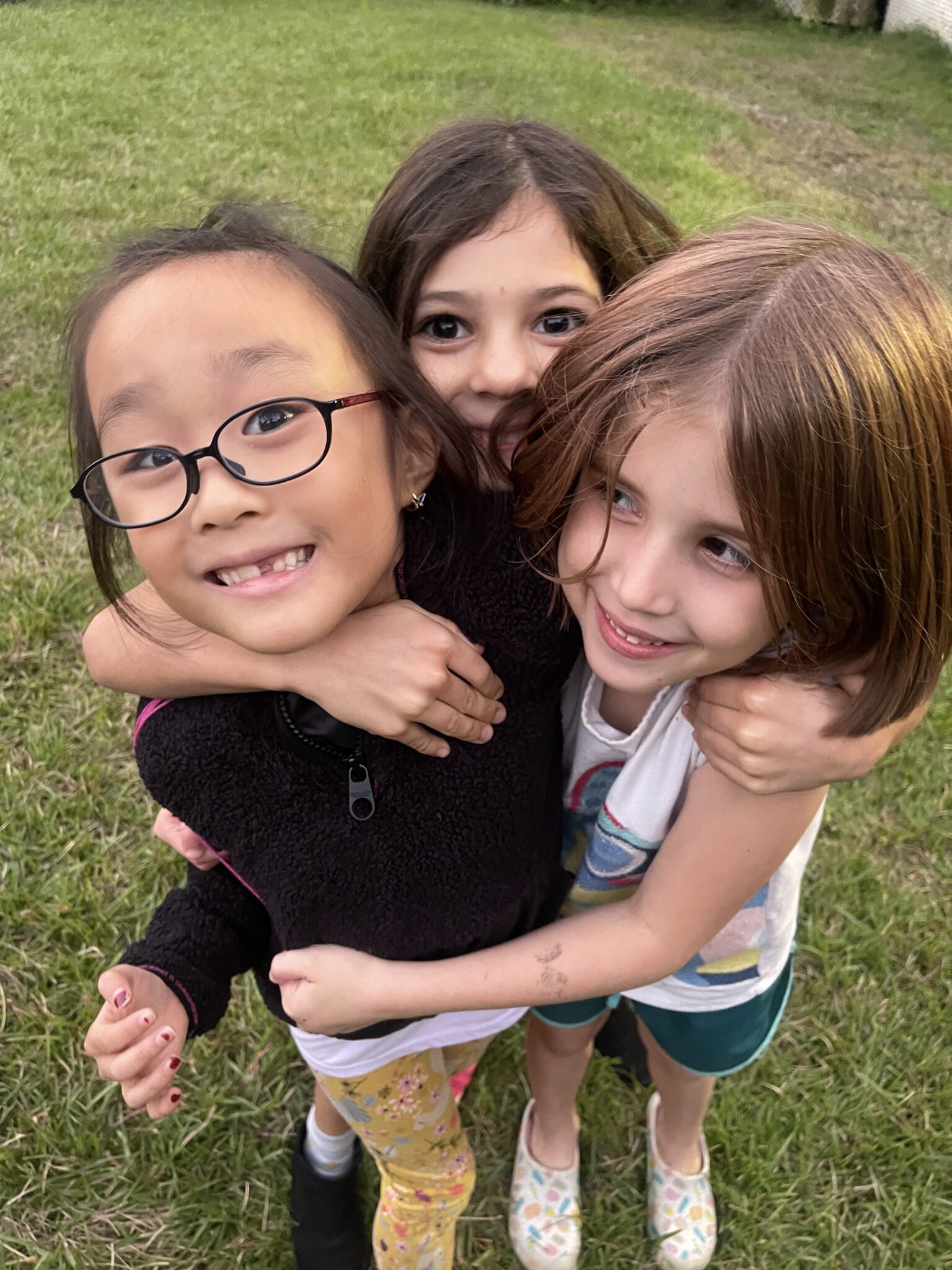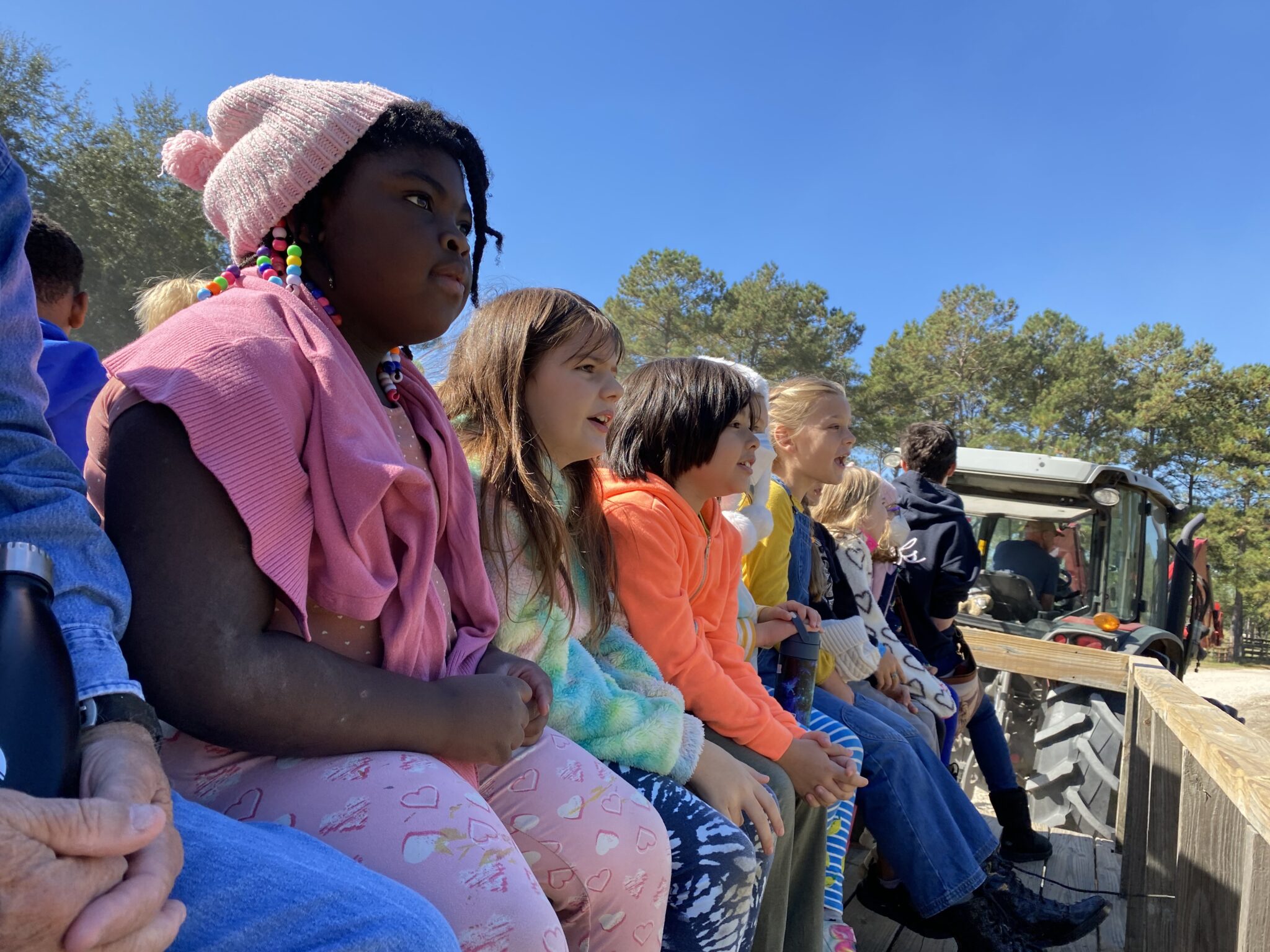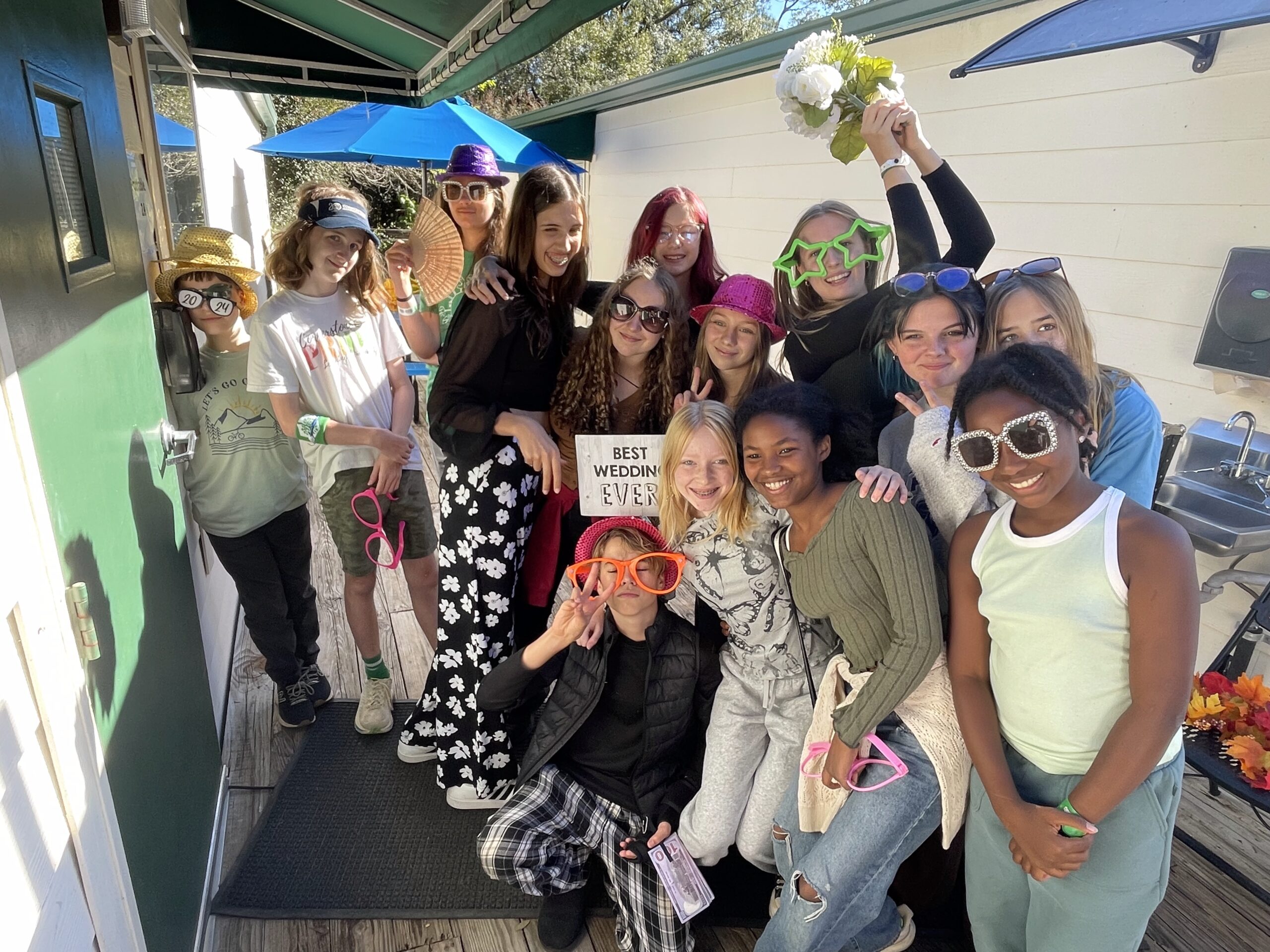First graders spend much of this year learning the basic reading tools. Your child will practice reading every day in an environment that strives to keep learning whole and meaningful, emphasizing self-direction and choice, and acknowledging that children learn best in a non-competitive, supportive environment.
They will…
First graders will…
First graders learn to participate in group settings and understand that there are different roles and responsibilities to be filled.
Students spend their first year at school learning to be a part of a larger group and adjusting to the school environment. They learn about families, homes, and schools, and begin to examine their membership in these groups.
First graders will…
“How is science knowledge collected and constructed?”
In first grade, we begin the year by exploring our five senses as our primary scientific tools for perceiving the world.
First graders will…
Develop an understanding of the difference between making observations about what they see and stating opinions.
At Cornerstone, our first-grade math program follows the Primary Mathematics curriculum, also widely known as Singapore Math. This internationally respected approach builds deep conceptual understanding, strong number sense, and confidence in problem-solving through a carefully sequenced, mastery-based structure.
Singapore Math uses a proven Concrete–Pictorial–Abstract (CPA) progression to help students truly understand math concepts—not just memorize procedures. Students begin with hands-on materials, move to visual models, and finally work with numbers and symbols to solidify understanding.
In first grade, students:
Our Primary Math curriculum encourages students to think mathematically, reason logically, and develop a true understanding of numbers and operations. The focus is not just on getting the right answer, but on learning how and why math works—preparing students for success in upper grades and beyond.
First Graders spend much of their time drawing and painting in the regular classroom, but will attend formal art classes with an art teacher twice weekly. Students are taught that art is a form of communication and a means of expressing themselves. Through communication and self-expression, art becomes a source of discovery and joy.
Every student in kindergarten through eighth grade attends a minimum of two 50-minute classes in physical education per week. To reflect the National Association of Sport and Physical Education standards by providing meaningful, appropriate games and activities, the elementary physical education program explores and promotes the development of skill-and health-related physical activity components.
Children attend weekly music classes taught by a professional music teacher. The classes strengthen and integrate basic music skills such as singing, rhythm, music reading, and instrument playing. Instruction is hands-on and energetic so that children develop enthusiasm for music as a means of artistic expression.
The Spanish Program in grades one through three is a conversational approach to language acquisition using thematic units, games, rhymes, movement, and picture books. The focus is on listening to the language, developing good pronunciation, and responding to Spanish commands or questions. The written language is introduced in third grade with labels, charts, and “libritos.”
In second grade at Cornerstone, children continue building strong academic skills while developing greater independence, empathy, and awareness of the world around them.
Students learn to reflect, collaborate, and serve others through a curriculum that connects body, mind, and spirit—laying the foundation for responsible citizenship and lifelong learning.
Second graders engage deeply with books and language in a joyful, strategy-rich reading environment.
Children explore community, citizenship, and change over time.
Inquiry-based learning keeps curiosity alive.
Using Primary Mathematics (Standards Edition), based on the Singapore Math approach:


Where Wonder Meets Purpose
Second grade at Cornerstone nurtures capable, curious, and caring learners.
Explore how Cornerstone inspires lifelong learners. Schedule a tour.
Third graders will develop higher levels of skills and confidence that allow them to read more challenging literature and articles. Interests they develop on their own and through class activities involving different topics will encourage them to do more independent reading. They will receive continued support with reading through individual reading with their teacher and other adults, and through small group reading experiences and literature circles.
Third Graders will…
Read independently and use comprehension strategies and skills as they read.
Cornerstone uses Primary Mathematics, a progressive curriculum that presents concepts in a spiral manner. This means that concepts are presented over multiple years, allowing students several exposures to skills before they are expected to master them.
Primary Mathematics (Standard Edition) is a complete program based on the highly successful Primary Mathematics series from Singapore. The program is designed to equip students with a strong foundation in math by focusing on mathematical understanding.
Pedagogical Approach and Methodology
Primary Mathematics approaches teaching by focusing on a Concrete~Pictorial~Abstract approach. This approach enables students to encounter math in a meaningful way and translate skills from the concrete to the abstract. This approach allows students to understand mathematical concepts before learning the “rules” or formulaic expressions.
Primary Mathematics (Standards Edition) is aligned with the standards adopted by the California Board of Education. Material is presented in a logical sequence throughout the grades, and mastery of the material is expected before moving to the next level.
Third Graders will…
Third-grade scientists are experienced observers with a growing ability to maintain deep focus on science questions. They are also becoming skilled at posing their own scientific questions and planning and carrying out experiments. Third graders continue to develop their observation and descriptive skills. Students in third grade delve into reading and citing non-fiction texts as sources of scientific information.
We explore the properties of matter and examine methods of classifying, mixing, and separating matter. Students evaluate the properties of different materials for solving engineering and design problems. Finally, we explore how living things change and use matter.
Mathematical skills are employed by students to summarize and make simple interpretations of experimental results.
Our primary goals in third-grade science are:
Third graders attend formal art classes with an art teacher twice weekly. They will create visual arts projects using a variety of materials and techniques, and will be exposed to works of master artists. At times, their projects will be centered on specific themes related to classroom work. At CLC, students are taught that art is a form of communication and a means of expressing themselves. Through this communication of self-expression, art becomes a source of discovery and joy.
Every student in kindergarten through eighth grade attends a minimum of two 50-minute physical education sessions per week. To reflect the National Association of Sport and Physical Education standards by providing meaningful, appropriate games and activities, the elementary physical education program explores and promotes the development of skill and health-related physical activity components.
Students also have at least 30 minutes of recess every day.
Third Graders attend weekly music classes taught by a professional music teacher. The class strengthens and integrates basic music skills, including singing and harmonizing, rhythm, reading, writing, creating music, and playing instruments. Instruction is hands-on and energetic so that children develop enthusiasm for music as a means of artistic expression. They also learn active listening techniques as they listen to examples of traditional music from a variety of cultures.
The Spanish program in grades one through three uses a conversational approach to language acquisition with thematic units, games, rhymes, movement, and picture books. The focus is on listening to the language, developing good pronunciation, and responding to Spanish commands or questions. The written language is introduced in third grade with labels, charts, and “libritos.”

Fourth graders become more independent, sophisticated readers. As their skills and experience increase, fourth graders will gain the confidence to tackle literature and nonfiction that significantly broaden their reading experiences. The teacher facilitates their continued growth as readers by designing appropriate reading assignments, organizing literature circles, and facilitating discussions. Students will also continue to receive direct instruction in reading by working individually with teachers.
At Cornerstone, our fourth-grade math program follows the Primary Mathematics curriculum, also widely known as Singapore Math. This internationally respected approach builds deep conceptual understanding, strong number sense, and confidence in problem-solving through a carefully sequenced, mastery-based structure.
Singapore Math uses a proven Concrete–Pictorial–Abstract (CPA) progression to help students truly understand math concepts—not just memorize procedures. Students begin with hands-on materials, progress to visual models (such as bar models), and then work with numbers and symbols to solidify their understanding.
In fourth grade, students:
Our Primary Math curriculum encourages students to think mathematically, reason logically, and develop a true understanding of numbers and operations. The focus is not just on getting the right answer, but on learning how and why math works—preparing students for success in upper grades and beyond.
Fourth graders spend most of this year studying the history, geography, culture, economy, and government of Florida. Using an 8′ x 8′ wall map of Florida, students investigate how Natives, Europeans, and Africans have shaped and continue to shape the Sunshine State.
Students investigate a specific area of study and then apply their knowledge graphically on the map.
This year-long format allows students to build skills in research and application, both individually and cooperatively. The result is that by the end of the year, students grasp Florida contextually in terms of climate, ecology, history, industry, population, and issues in government.
Student skills are sharpened through discussions, debates, and philosophical ponderings.
Science in the fourth grade builds on the concepts of patterns in nature and Earth’s systems.
Fourth graders study geology and rock classification in order to understand the processes that shape the Earth and how our landscape changes over time.
They layer their understanding of Florida’s Karst topography with water systems, while they tackle the water cycle. Stories in Stone is supplemented with a trip to Florida Caverns State Park in Marianna and soil percolation studies at Longview Farms.
As we travel up through the atmosphere, the students study weather and climate through maps, experiments, text, and data. The final unit inspires students to look towards the sky to track and understand patterns and movement of our solar system. They work together to construct parachutes to showcase their understanding of the effects of gravity and the atmosphere, as well as to develop a scale distance model that stretches the length of the school. This unit culminates in an overnight trip to NASA!
Fourth graders attend formal art classes with an art teacher each week. They create visual arts projects using a variety of materials and techniques, and are exposed to works of professional artists. At times, their projects will be centered on specific themes related to classroom work. At CLC, students are taught that art is a form of communication and a means of expressing themselves. Through this communication and self-expression, art becomes a source of discovery and joy.
Every student in kindergarten through eighth grade attends a minimum of two 50-minute physical education sessions per week. To reflect the National Association of Sport and Physical Education standards by providing meaningful, appropriate games and activities, the elementary physical education program explores and promotes the development of skill and health-related physical activity components.
Students also have at least 30 minutes of recess every day.
Fourth graders attend weekly music classes taught by a professional music teacher. The classes strengthen and integrate basic music skills such as singing and harmonizing, rhythm, reading, writing, theoretical analysis and creating of music and instrument playing. Instruction is hands-on and energetic so that children develop enthusiasm for music as a means of artistic expression. They also learn active listening techniques as they listen to examples of traditional music from a variety of cultures.
The Spanish Program in grades four and five continues the conversational approach to language acquisition using thematic units, games, poems, movement, and literature. Listening to the Spanish language, developing good pronunciation and building vocabulary will continue to be the focus of each lesson. Within each lesson, there will be the opportunity to learn and practice the mechanics of the language. Reading and writing Spanish will be introduced and practiced through worksheets and “libritos.”

Fifth graders become more independent, sophisticated readers.
As their skills and experience increase, they will gain the confidence to tackle literature and nonfiction texts that significantly broaden their reading experiences. The teacher facilitates their continued growth as readers by designing appropriate reading assignments, organizing literature circles, and facilitating discussions of texts.
Fifth graders will…
At Cornerstone, our fifth-grade math program follows the Primary Mathematics curriculum, also widely known as Singapore Math. This internationally respected approach builds deep conceptual understanding, strong number sense, and confidence in problem-solving through a carefully sequenced, mastery-based structure.
Singapore Math uses a proven Concrete–Pictorial–Abstract (CPA) progression to help students truly understand math concepts—not just memorize procedures. Students begin with hands-on materials, move to visual models, and finally work with numbers and symbols to solidify understanding.
In fifth grade, students:
Our Primary Math curriculum encourages students to think mathematically, reason logically, and develop a true understanding of numbers and operations. Students leave fifth grade confident, prepared for middle school, and equipped with strong problem-solving skills.
Fifth graders learn about the history of the southeastern United States through the lens of marginalized people.
Much of the focus throughout the year is:
These studies culminate each year with a tour of the Southeast, focusing on the Civil Rights Movement, which includes visits to Selma, Alabama; Montgomery, Alabama; Tuskegee University; and Atlanta, Georgia. The focus of this trip is to see, smell, feel, and experience some significant historical locations that the students have learned about throughout the year.
Everything is a part of and necessary to a larger whole. Topics of investigation in 5th grade include:
Fifth graders develop the maturity to design and execute their own investigations.
The third part of the year is developed around understanding the structure and function of matter, as well as the interdependent relationships in ecosystems.
Through gardening, composting, and creating biobottles, students learn about the interactions between abiotic and biotic elements in a healthy ecosystem. This provides the foundation and structure for looking at life at a cellular level.
Fifth graders will attend a formal art class with an art teacher once a week. They will work on projects using a variety of materials and techniques, and will be exposed to the works of master artists. Students are taught that art is a form of communication and a means of expressing themselves. Through this communication and self-expression, art becomes a source of discovery and joy.
Every student in kindergarten through eighth grade attends a minimum of two 50-minute physical education sessions per week. To reflect the National Association of Sport and Physical Education standards by providing meaningful, appropriate games and activities, the elementary physical education program explores and promotes the development of skill and health-related physical activity components.
Students also have at least 30 minutes of recess every day.
Fifth graders attend weekly music classes taught by a professional music teacher. The classes strengthen and integrate basic music skills such as singing and harmonizing, rhythm, reading, writing, theoretical analysis, and creating music and instrument playing. Instruction is hands-on and energetic so that children develop enthusiasm for music as a means of artistic expression. They also learn active listening techniques as they listen to examples of traditional music from a variety of cultures.
The Spanish program in grades four and five continues the conversational approach to language acquisition using thematic units, games, poems, movement, and literature. Listening to the Spanish language, developing good pronunciation and building vocabulary will continue to be the focus of each lesson. Within each lesson, there will be the opportunity to learn and practice the mechanics of the language. Reading and writing Spanish will be introduced and practiced through worksheets and “libritos.”